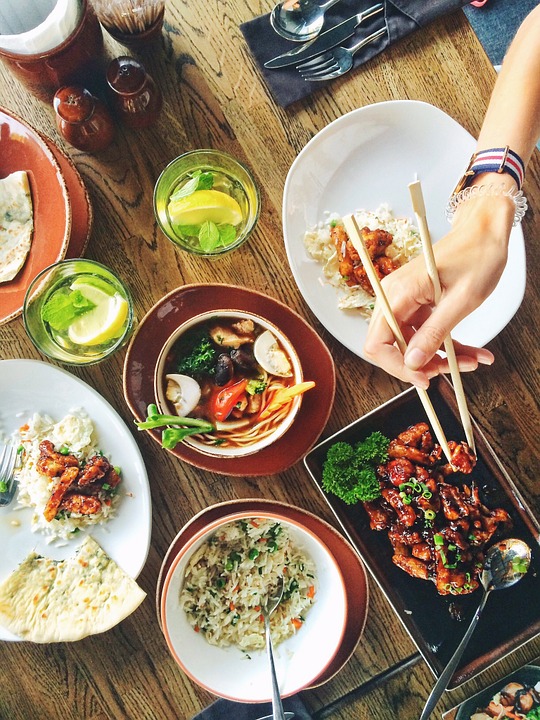Difference Between Japanese and Chinese Food
Unnoticed differences
Compared to cuisines that originate in the West, Eastern cuisine is quite different. Yet, looking at various types of eastern cuisine, one might find that they have rather prominent similarities. There are a few differences as well. Most may not see it but especially when it comes to Japanese and Chinese cuisine, there are stark variances.

Greasy vs Non-greasy
Chinese food is very common among many palates across the world and therefore, we know all too well that Chinese food is oily. On top of that, the Chinese also include carbohydrate-rich ingredients in mostly all dishes such as rice and noodles. While the Japanese too include the aforementioned dishes, food is less greasy and light to the stomach making it the healthy choice.
Pan vs Teppan
The Chinese tend to see that their food is evenly cooked and therefore use a wok that rolls the ingredients constantly. The Japanese, on the other hand, use flat pans called teppan which is sort of like a grill used on high heat such as those seen at Teppanyaki restaurants. This keeps the food crisp on the outside and juicy on the inside.
Raw
If you’ve tasted anything from restaurants like Benihana Thailand, you’ll know just how much the Japanese love raw food, especially raw seafood. Chinese too eat raw food, but only when it comes to vegetables like green onion and spices like garlic.
Black tea vs Green tea
Both food cultures have the element of tea within them. However, the Chinese drink black tea while the Japanese drink green tea. Both teas aid in the digestion of food while cutting off excess oil consumed.
| Fritzjames Stephen is a travel writer, who writes content based on the myriad of experiences and indulgences that the world has to offer travellers across all walks of life. Google+ |
Related posts
Archives
Categories
- Appetizers (7)
- Arab (32)
- Bars (28)
- Burmese (6)
- Café (18)
- Casual Dining (19)
- Chinese (33)
- Coffee House (26)
- Desserts (11)
- Destination Dining (217)
- Diner (13)
- Family Restaurants (45)
- Fast Food (43)
- Fine Dining (487)
- Food Facts (137)
- Healthy Food (64)
- Hong Kong (9)
- Indonesian (15)
- Italian (2)
- Japanese (9)
- Main Dishes (31)
- Maldivian (55)
- Miscellaneous (4)
- Miscellaneous Topics (329)
- Palate (41)
- Recipes (56)
- Restaurants (168)
- Sea Food (59)
- Singaporean (18)
- Sri Lankan (57)
- Steaks & Grill (37)
- Street Food Stalls (116)
- Thai (69)
- Types of Cuisines (97)
- Vegan (31)
- Vegetarian (6)
- Vegeterian (23)
- Vietnamese (17)
- Western (8)
